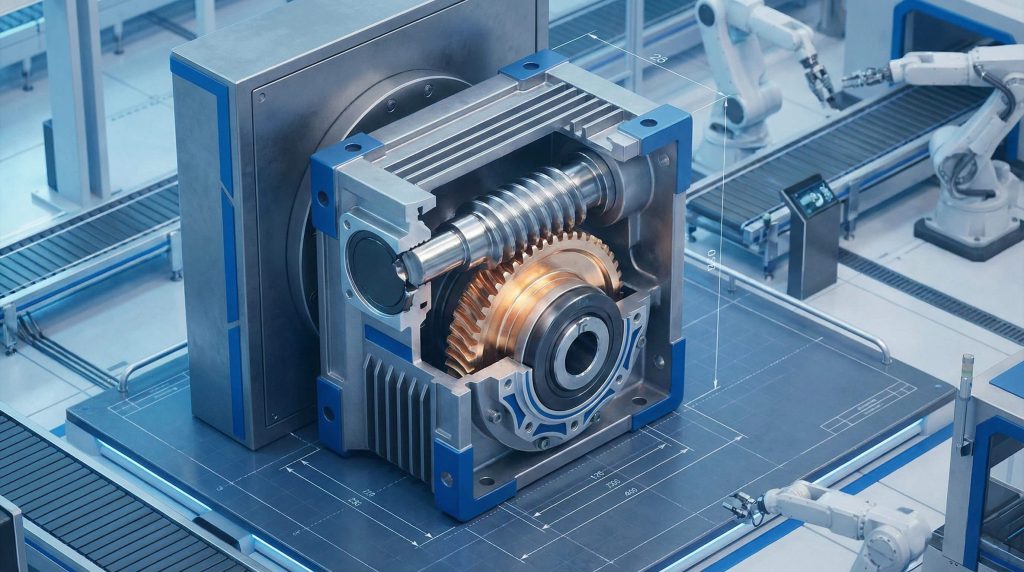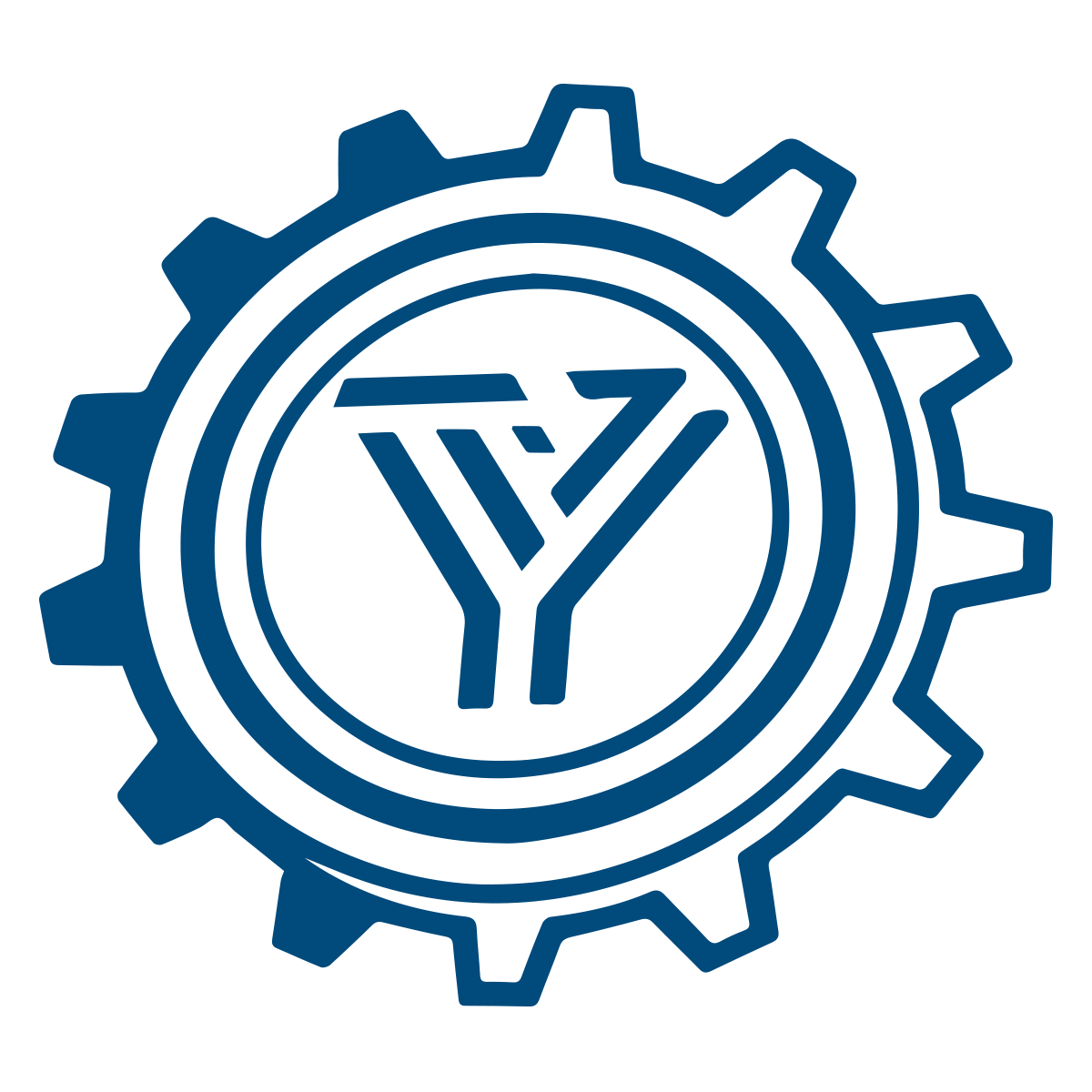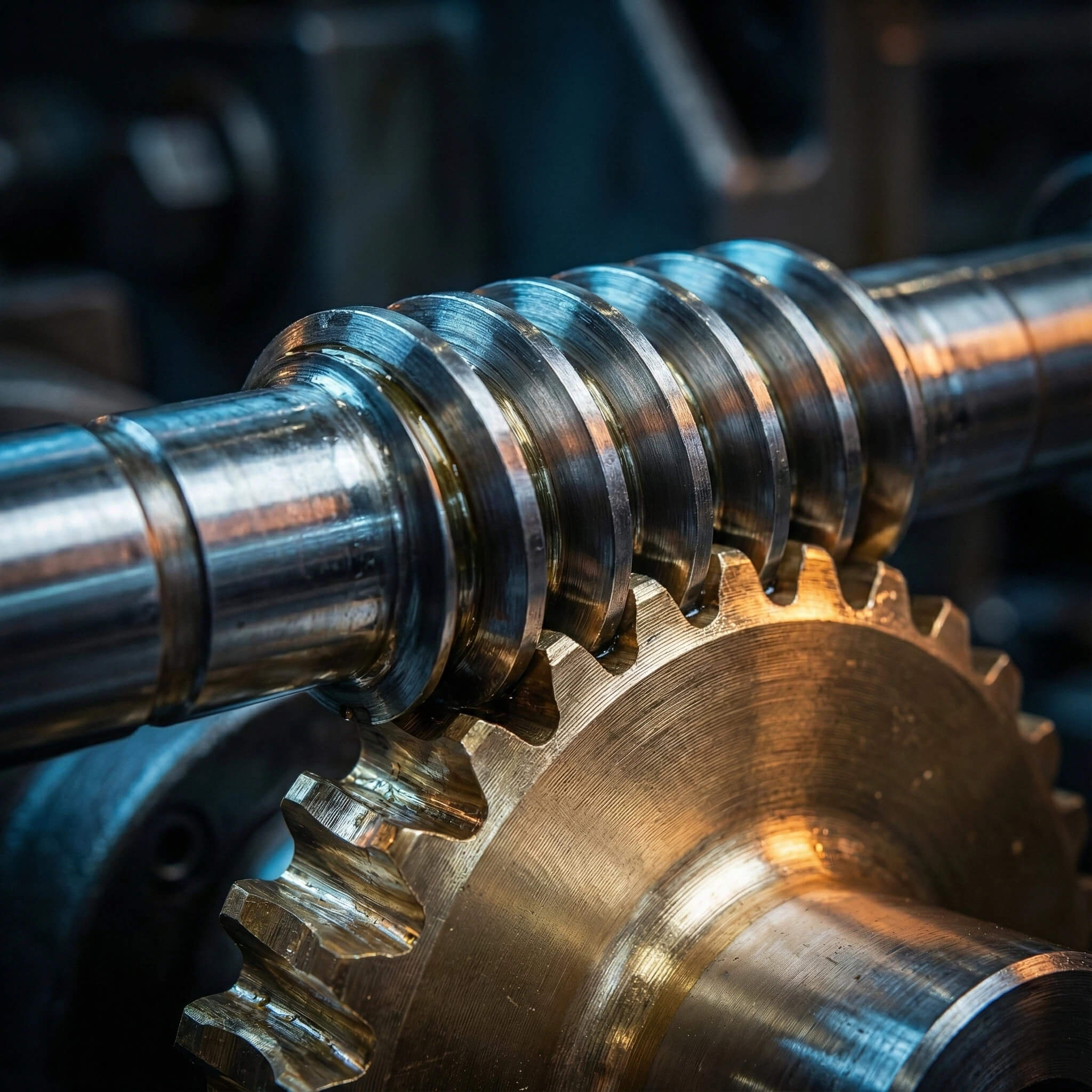Mechanical engineers and procurement managers often struggle with a specific set of constraints. You have limited space inside a machine frame, yet you need massive torque to move a heavy load. Perhaps safety regulations demand a braking mechanism for a vertical lift, but your budget does not allow for an external electromagnetic brake. Or maybe your client in the food processing industry is complaining about the noise generated by standard spur gears.
These problems are not just annoyances; they cause project delays and inflate costs. If you find yourself nodding at these challenges, you likely need a transmission solution that balances power, size, and safety differently than standard drivetrains. Worm gear sets offer a robust answer to these exact engineering headaches. At Yantong Tech, we understand this balance deeply, helping you build better machines through verifiable quality and precise manufacturing.

1. What Defines a High-Quality Worm Gear Set?
The Critical Interaction Between Shaft and Wheel
Defining quality in power transmission is not about shiny surfaces; it is about what happens at the microscopic level where metal meets metal. A worm gear set functions through sliding contact, unlike the rolling contact of spur gears. Here is the deal regarding long-lasting performance: it comes down to the compatibility of the materials and the precision of the contact patch.
Importance of Metallurgical Compatibility
If a manufacturer uses incompatible materials, the system will fail. You cannot pair a soft steel worm with a soft brass wheel and expect durability. The standard for industrial reliability pairs a case-hardened steel shaft (20CrMnTi) with a specific bronze alloy wheel (CuSn12). The steel provides strength, while the bronze offers a lower coefficient of friction to prevent seizing.
Contact Pattern Verification
Beyond chemistry, the physical geometry of the mesh is paramount. A high-quality set has a contact area localized to the “drive side” with an entry gap for oil. We simulate deflection and verify that the contact pattern shifts to the center under torque.
| Component | Material Standard | Function |
|---|---|---|
| Worm Shaft | Case-Hardened Steel | Provides structural drive strength |
| Worm Wheel | Bronze Alloy (CuSn12) | Reduces friction and prevents seizing |
| Surface Finish | Mirror-Smooth (Low Ra) | Minimizes abrasion on the wheel |
This level of material and geometric detail distinguishes a gear that lasts five years from one that fails in five weeks.
2. How Do Worm Gears Achieve High Torque in Compact Spaces?
Single-Stage Reduction Capabilities
Modern industrial design is a battle for real estate. Standard gear trains often require multiple stages to achieve high speed reduction, adding weight and consuming space. You might be wondering, how does the worm gear solve this? A worm gear set can achieve massive reduction ratios—from 5:1 to 100:1—in a single mesh.
Eliminating Bulky Multi-Stage Gearboxes
One rotation of the worm moves the wheel by only one tooth. This allows you to take a high-speed motor output and convert it directly to high torque in a compact box. For a packaging machine builder, this means the drive system can tuck neatly inside the frame, improving safety and aesthetics.
Design Benefits for Tight Footprints
Comparatively, a worm gear reducer is often half the size of a coaxial helical reducer for high ratios. This compactness allows for “hollow shaft” designs, eliminating couplings and base plates entirely.
| Feature | Worm Gear Set | Multi-Stage Spur Gear |
|---|---|---|
| Reduction Ratio | 5:1 to 100:1 | 1:1 to 6:1 |
| Space Requirement | Very Compact | Bulky / Long |
| Moving Parts | 2 (Worm + Wheel) | 4+ (Multiple Gears) |
| Torque Density | High | Medium |
Comparing the physical footprint of different gear types reveals the advantage clearly.
3. Why Is Self-Locking a Critical Safety Advantage?
Understanding Friction Angles
Safety is the primary concern in any application fighting gravity. In standard gear systems, the load can drive the motor backward if power is lost. But here is the catch that makes worm gears indispensable: they possess self-locking properties. This occurs when the lead angle is shallow enough that friction overcomes the driving force.
Safety Benefits for Vertical Lifting
In simple terms, the motor can turn the gear, but the gear cannot turn the motor. The load stays suspended even if the power fails. For a mining repair crew or a stage lift operator, this physics-based redundancy saves lives and acts as a crucial backup.
Reducing Costs on Brakes
While not absolute, this feature often allows engineers to eliminate large external brakes for adjustments like angling solar panels or conveyor heights. We treat “locking” as a tunable engineering variable to ensure you get the safety you expect.
| Parameter | Condition | Result |
|---|---|---|
| High Lead Angle | > 5 Degrees | Reversible (Back-drivable) |
| Low Lead Angle | < 5 Degrees | Self-Locking (Holds Load) |
| Vibration | High Presence | May cause “creep” (Requires brake) |
We analyze the specific lead angle of your design to maximize friction for holding power.
4. How Do Worm Gears Ensure Quiet Operation?
Sliding vs. Rolling Acoustics
Noise pollution is a health hazard and a sign of inefficiency. This brings us to the acoustic superiority of the worm drive. The motion is predominantly sliding, not banging. The worm threads gently slide into the wheel teeth in a continuous fluid wave, cushioning impact and reducing vibration.
Applications in Sensitive Environments
In environments like theaters or hospitals, this silence is non-negotiable. A well-manufactured worm gear set running in an oil bath is often quieter than the electric motor fan itself, allowing for whisper-quiet conversations right next to the gearbox.
Surface Finish Requirements
Achieving silence requires strict manufacturing controls. We use precision CNC grinding to achieve a surface finish of Ra 0.4 or better. This prevents the “singing” caused by grinding marks rubbing against bronze.
| Noise Factor | Standard Spur Gear | Worm Gear |
|---|---|---|
| Contact Type | Rolling/Impact | Sliding/Fluid |
| Vibration Profile | High Frequency Whine | Low Vibration |
| Required Finish | Standard Ground | Mirror Polish |
Quiet operation is the ultimate proof of geometric precision and surface quality.
5. What Are the Shock Load Absorption Capabilities?
Bronze as a Shock Absorber
Heavy industry subjects drivetrains to violent shocks. In fully hardened steel gear trains, energy has nowhere to go, leading to snapped teeth. Consider this unique benefit: the material mismatch is a deliberate safety feature. The bronze wheel has a lower modulus of elasticity than steel.
Preventing Catastrophic Breakage
When a shock load hits, the bronze teeth deform microscopically to absorb the impact energy. It acts as a metallurgical shock absorber, protecting the expensive motor and shafts from damage.
Reliability in Crushing Machinery
While a plastic gear might fail under load, and steel might fail under shock, bronze strikes the ideal balance. We ensure casting quality is flawless so that if a catastrophic overload occurs, the teeth strip safely rather than exploding the shaft.
| Material | Reaction to Shock Load | Risk Factor |
|---|---|---|
| Hardened Steel | Brittle / No deformation | Tooth fracture or shaft shear |
| Bronze Alloy | Ductile / Micro-deformation | Absorbs energy safely |
| Plastic/Nylon | High absorption | Fails under high torque |
We select bronze grades specifically for their toughness to withstand daily industrial abuse.
6. How Does Material Selection Impact Longevity?
The Science of Tribology
Longevity is dictated by metallurgy. You cannot simply pick generic metals and expect service life. What is the real story behind reliable materials? It involves specific alloys and heat treatments. We use 20CrMnTi for shafts with carburizing treatments to create a wear-resistant shell while keeping the core tough.
Heat Treatment Processes
For the wheel, we use bronzes like CuSn12Ni where nickel improves corrosion and wear resistance. This chemistry supports the mechanical load and ensures the gear set can withstand constant sliding friction.
Material Traceability
Traceability is non-negotiable. We provide heat treatment curves and composition reports because we know clients need to trust the metal structure, not just the dimensions.
| Material Component | Common Grade | Hardness | Purpose |
|---|---|---|---|
| Worm Shaft | 20CrMnTi | 58-62 HRC | Surface wear resistance |
| Worm Wheel | CuSn12 | 90-100 HB | Low friction, high load |
| Worm Wheel | CuSn10Pb1 | 70-80 HB | High lubricity |
Longevity comes from the atoms up, and we control that process strictly.
7. What Are the Efficiency Considerations and Trade-offs?
Managing Heat Generation
We believe in honest engineering. The sliding action that provides torque also generates friction and heat. Let’s be honest about this: while spur gears may hit 98% efficiency, worm gears are lower. Ignoring this thermal reality is a recipe for failure.
Selecting the Right Lubrication
Management is key. This involves selecting high-viscosity synthetic oils (PAG based) to separate sliding surfaces and designing housings with fins to dissipate heat. We advise clients on duty cycles to prevent overheating.
Realistic Power Expectations
Low efficiency does not mean bad performance. In applications like valve turning or lifting, the energy loss is negligible compared to the utility gained. We help you calculate thermal ratings to ensure stability.
| Factor | Strategy | Benefit |
|---|---|---|
| Lubricant | Synthetic PAG Oil | Withstands high shear/temp |
| Housing | Cooling Fins | Dissipates friction heat |
| Operation | Intermittent Duty | Allows thermal recovery |
We optimize the lead angle to get the best possible efficiency without sacrificing self-locking properties.
8. Why Choose Custom vs. Standard Worm Gears?
Solving Retrofitting Challenges
Catalog gears rarely fit unique constraints. Whether retrofitting a vintage paper mill machine or designing a robotic arm with non-standard center distances, off-the-shelf parts often require compromise. Here is why that matters for your bottom line: customization avoids expensive adapters.
Optimizing Geometry
Yantong Tech specializes in flexible manufacturing. We do not force high Minimum Order Quantities (MOQs). We can modify shaft ends, change keyways, or adjust pressure angles to increase strength exactly where you need it.
Reverse Engineering
We often receive worn-out gears with no drawings. We measure, analyze, and generate new blueprints, often upgrading materials to correct the original failure modes.
| Scenario | Standard Gear | Custom Gear |
|---|---|---|
| Retrofit | Requires Adapters | Drop-in Replacement |
| Load Capacity | Fixed / Generic | Optimized for Duty Cycle |
| Availability | Catalog Dependent | On-Demand Manufacturing |
Customization is not just about geometry; it is about solving a problem that off-the-shelf parts cannot touch.
9. How to Verify Quality in Worm Gear Manufacturing?
Necessity of Advanced Metrology
Trust is good, but data is better. Precision in worm gears is invisible to the naked eye, but your machine will feel a 10-micron error. Ready for the best part? You do not have to guess. Yantong Tech operates with a “glass box” policy using sophisticated metrology.
Understanding Inspection Reports
We use Gear Measuring Centers to check profile errors and CMMs to verify dimensions. We perform mesh testing to visualize the contact pattern physically. Every batch generates a paper trail.
Data Prevents Failure
A reliable partner should email you inspection data. We check hardness, surface roughness, and material composition before shipping. This reduces the risk of global sourcing significantly.
| Inspection Metric | Equipment Used | Why It Matters |
|---|---|---|
| Profile/Lead Error | Gear Measuring Center | Ensures smooth mesh & low noise |
| Surface Roughness | Roughness Tester | Reduces friction & heat |
| Contact Pattern | Mesh Tester | Visual proof of proper alignment |
This rigorous verification process replaces promises with verifiable engineering data.
Conclusion
Worm gears remain a cornerstone of industrial power transmission for good reason. They solve the difficult problems of space, torque, and safety in ways that other mechanisms cannot. From the massive reduction ratios that allow compact machine designs to the self-locking capabilities that enhance safety, their utility is undeniable.
The key to realizing these benefits lies in the quality of manufacturing. Yantong Tech is built on the premise that you deserve reliable parts and honest technical support. We are ready to be the partner that helps you optimize your transmission systems. If you are facing a tough design challenge, contact us today. Let us prove what reliable manufacturing looks like.
FAQ
Q1: What is the main disadvantage of a worm gear?
The primary disadvantage is lower efficiency compared to other gear types. Due to the sliding contact between the worm and the wheel, significant energy is lost as heat. This requires careful attention to lubrication and cooling, especially in high-speed or continuous-duty applications.
Q2: Can a worm gear drive the worm shaft backwards?
It depends on the ratio and lead angle. While many high-ratio worm gears are “self-locking” (meaning the wheel cannot drive the worm), this is not guaranteed for all ratios. Low-ratio gears can back-drive. For safety-critical lifting, you should never rely solely on the gear for holding; always use a fail-safe brake.
Q3: What lubrication is best for worm gears?
High-viscosity synthetic oils (like Polyglycol based) are generally best. They offer superior film strength to separate the sliding metal surfaces and handle the heat better than mineral oils. Always follow the manufacturer’s specific viscosity recommendations based on load and speed.
Q4: How does Yantong Tech ensure worm gear precision?
We use a combination of advanced CNC manufacturing and rigorous inspection. We employ gear profile testers to check lead and pitch errors, CMMs for dimensional accuracy, and mesh testers to verify the contact pattern physically. We also provide full material traceability reports with every batch.
Q5: Are worm gears suitable for high-speed applications?
Generally, no. The sliding friction generates excessive heat at high input speeds, which can break down the lubricant and damage the bronze wheel. Worm gears excel in low-to-medium speed applications where torque multiplication and smooth operation are the priorities.

